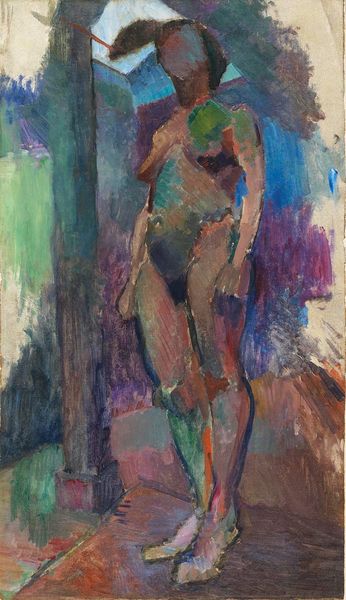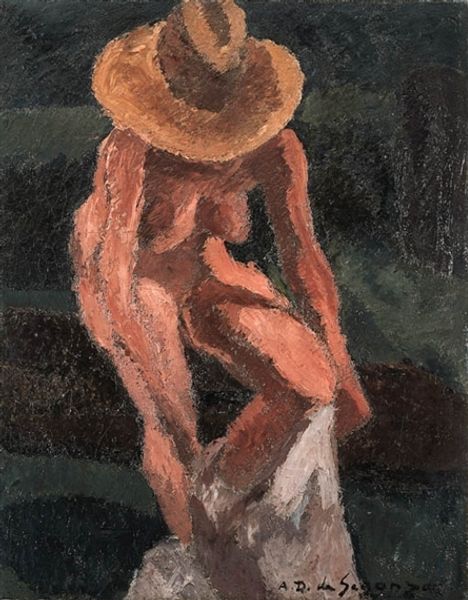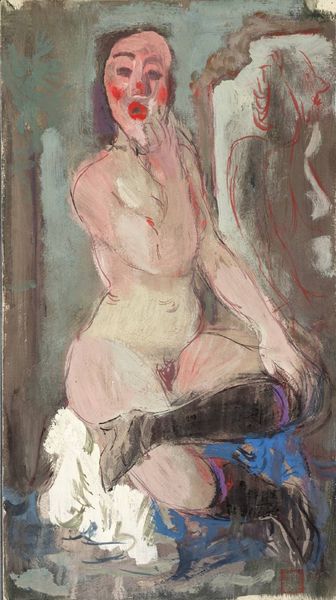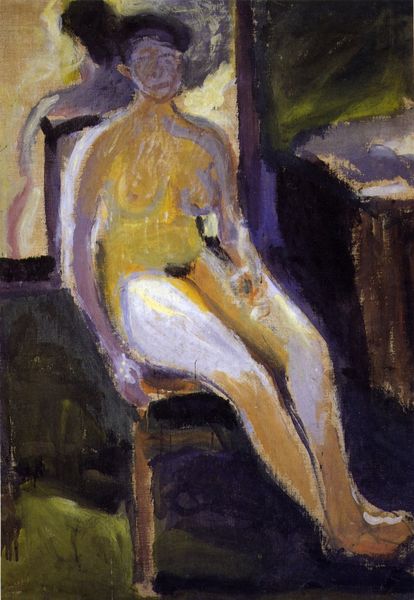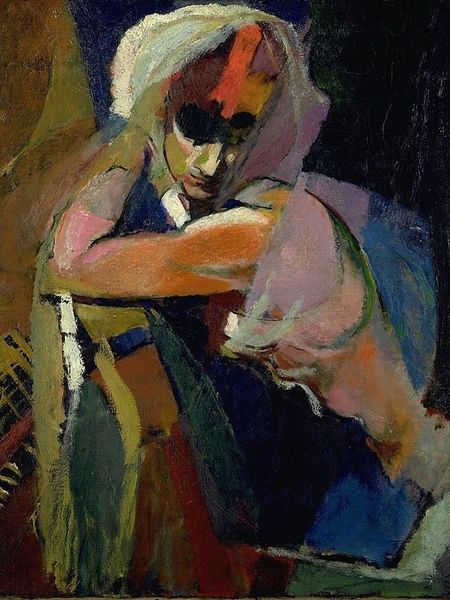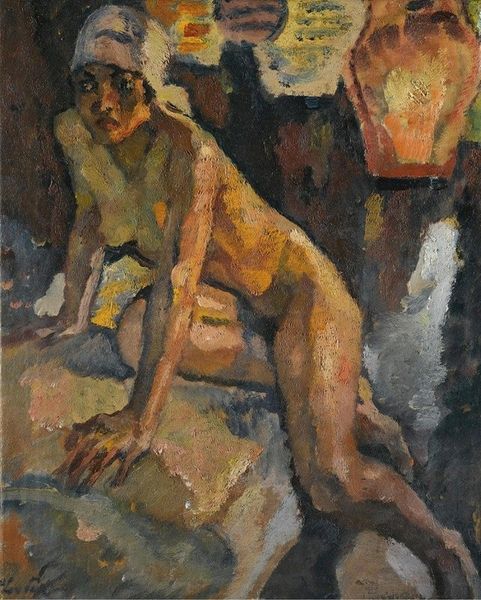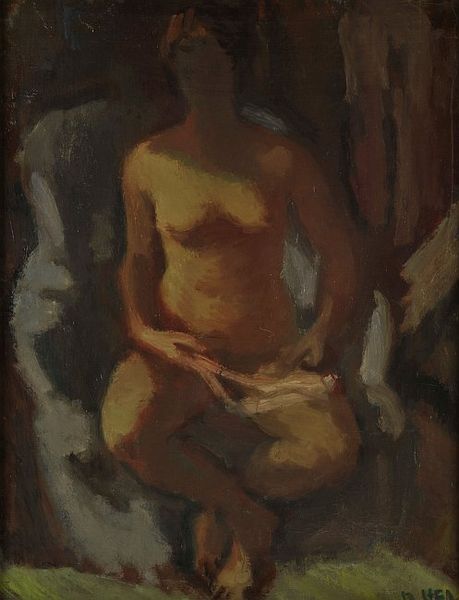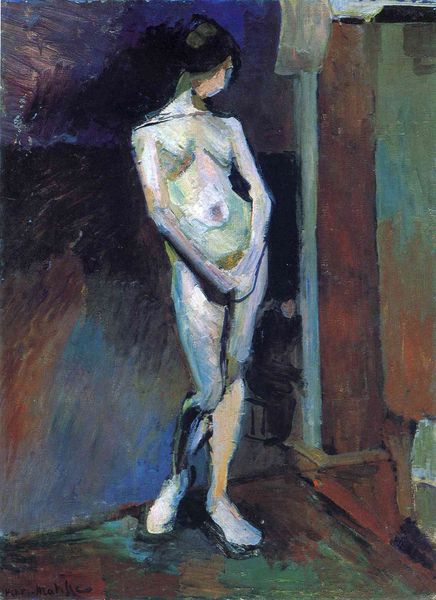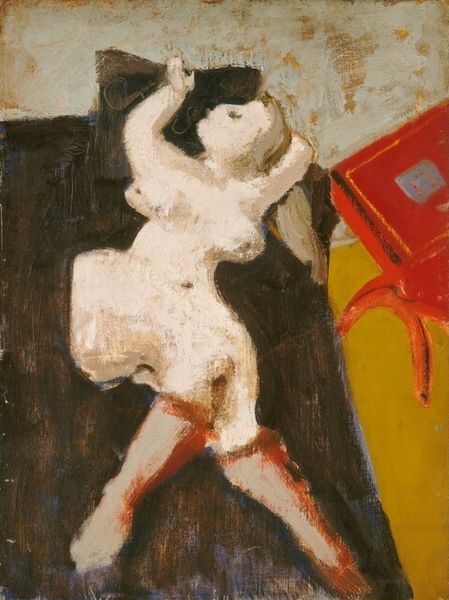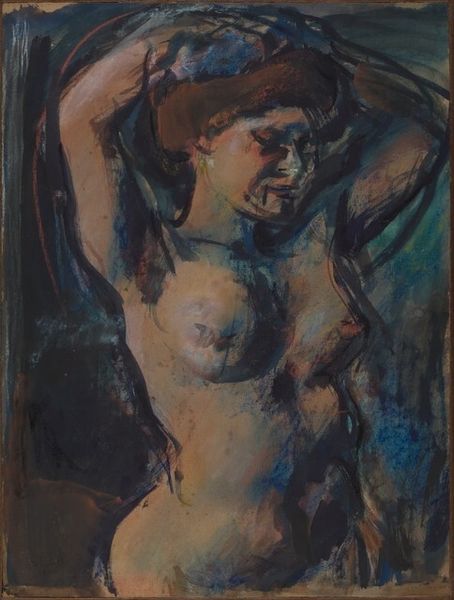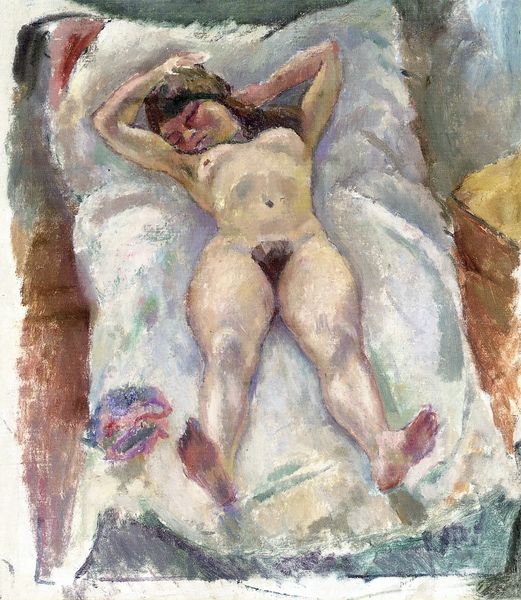
Copyright: Public domain US
Curator: So, here we have Raoul Dufy's "Claudine from back," an oil on canvas painted around 1906. Editor: It strikes me immediately as a dance – not in the obvious balletic sense, but a kind of solitary, improvisational movement. The light catches her back just so. There’s a story unfolding there. Curator: It's interesting you say that. The intimacy here suggests a behind-the-scenes moment, away from performance. Dufy frequently returned to this motif of the female nude in private moments. Consider the history of portraying the female form in art—a recurring subject reflecting cultural ideals, sexuality, and vulnerability. It becomes about form and light, of course, but the nude as a subject invites symbolic interpretations. Editor: Absolutely. The curves are soft, but the palette is almost ruddy – fleshy and raw. And her gesture is powerful – not demure at all. I'm wondering about the symbols she is connected with and how it might reflect ideas on art. Is this image really intimate? The posture conveys dynamism and confidence. It’s almost as if she’s conducting her own silent symphony, and in turn invites us to think about our role and response in our everyday world, what it is to just feel something or not? I see the influence of Impressionism in those brushstrokes and in its color intensity. Curator: You’ve nailed the way Dufy melds Impressionistic techniques with a nascent personal style. And while it is intimate in the sense that it depicts a private moment, it certainly possesses that arresting, non-objectified presence. As a creator, I see myself searching constantly for ways to express inner truth. It requires immense strength. There's also something to be said for its art historical place, as the image almost subverts conventional portraiture. There's a power in seeing someone from this perspective—both physically and emotionally. Editor: Right, not to simply titillate but to, as you say, hint at inner truths. In a culture steeped in images that dictate and define what a woman ‘should’ be, an artwork like this, offering another reading, serves almost as a symbolic reclamation. Curator: Yes. And a recognition. When one confronts the blank canvas, that is always the point of my struggle and passion: to connect and evoke some aspect of universal experience. So yes, for a 2-minute meditation on a work, hopefully it makes you ponder. Editor: Exactly. It reminds us to question the symbols we readily accept. Each artwork holds multiple perspectives, all worthy to discover, consider and celebrate.
Comments
No comments
Be the first to comment and join the conversation on the ultimate creative platform.
